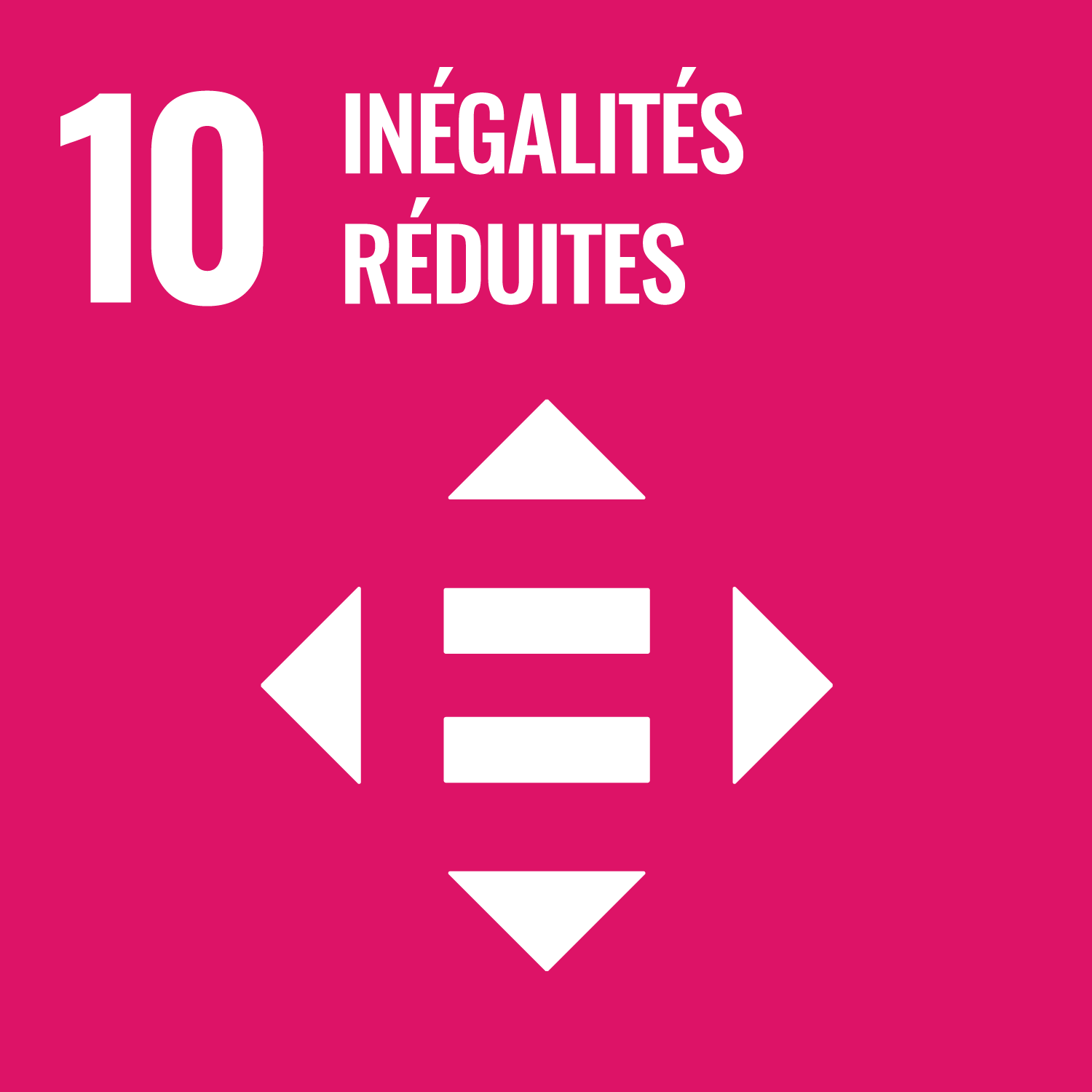10. Réduire les Inégalités#
Les Cibles#
By 2030, progressively achieve and sustain income growth of the bottom 40 per cent of the population at a rate higher than the national average*
Indicators:
- 10.1.1: Growth rates of household expenditure or income per capita among the bottom 40 per cent of the population and the total population
By 2030, empower and promote the social, economic and political inclusion of all, irrespective of age, sex, disability, race, ethnicity, origin, religion or economic or other status
Indicators:
- 10.2.1: Proportion of people living below 50 per cent of median income, by sex, age and persons with disabilities
Ensure equal opportunity and reduce inequalities of outcome, including by eliminating discriminatory laws, policies and practices and promoting appropriate legislation, policies and action in this regard
Indicators:
- 10.3.1: Proportion of population reporting having personally felt discriminated against or harassed within the previous 12 months on the basis of a ground of discrimination prohibited under international human rights law
Adopt policies, especially fiscal, wage and social protection policies, and progressively achieve greater equality
Indicators:
- 10.4.1: Labour share of GDP
- 10.4.2: Redistributive impact of fiscal policy
Improve the regulation and monitoring of global financial markets and institutions and strengthen the implementation of such regulations
Indicators:
- 10.5.1: Financial Soundness Indicators
Ensure enhanced representation and voice for developing countries in decision-making in global international economic and financial institutions in order to deliver more effective, credible, accountable and legitimate institutions
Indicators:
- 10.6.1: Proportion of members and voting rights of developing countries in international organizations
Facilitate orderly, safe, regular and responsible migration and mobility of people, including through the implementation of planned and well-managed migration policies
Indicators:
- 10.6.1: Recruitment cost borne by employee as a proportion of montlhy income earned in country of destination
- 10.6.2: Number of countries with migration policies that facilitate orderly, safe, regular and responsible migration and mobility of people
- 10.6.3: Number of people who died or disappeared in the process of migration towards an international destination
- 10.6.4: Proportion of the population who are refugees, by country of origin
Implement the principle of special and differential treatment for developing countries, in particular least developed countries, in accordance with World Trade Organization agreements
Indicators:
- 10.a.1: Proportion of tariff lines applied to imports from least developed countries and developing countries with zero-tariff
Encourage official development assistance and financial flows, including foreign direct investment, to States where the need is greatest, in particular least developed countries, African countries, small island developing States and landlocked developing countries, in accordance with their national plans and programmes
Indicators:
- 10.b.1: Total resource flows for development, by recipient and donor countries and type of flow (e.g. official development assistance, foreign direct investment and other flows)
By 2030, reduce to less than 3 per cent the transaction costs of migrant remittances and eliminate remittance corridors with costs higher than 5 per cent
Indicators:
- 10.c.1: Remittance costs as a proportion of the amount remitted
Les Données#
Note
Le but ici est de récupérer les données qui peuvent nous permettre d’analyser les résultats relatifs aux objectifs

